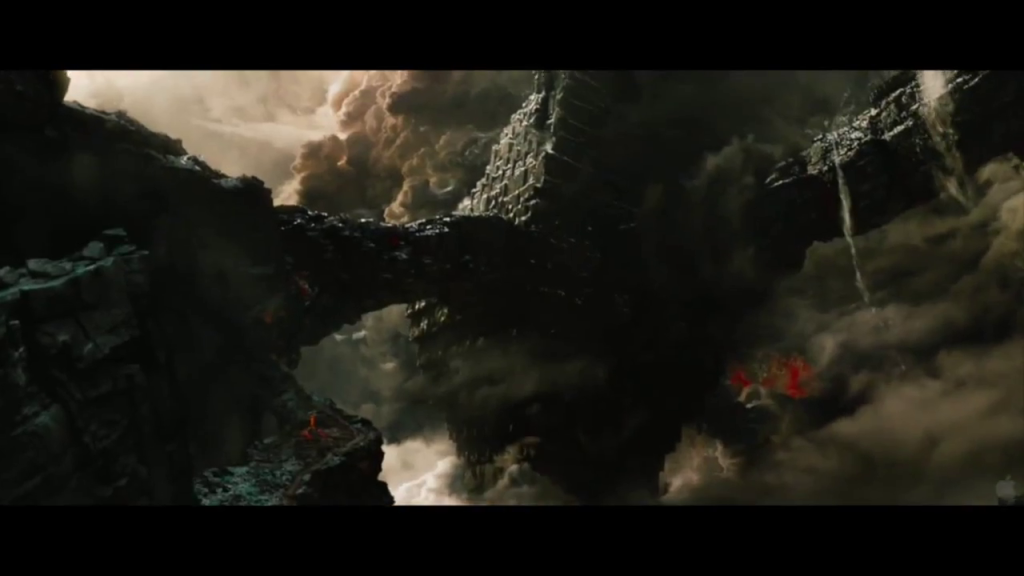The BRAWL² Tournament Challenge has been announced!
It starts May 12, and ends Oct 17. Let's see what you got!
https://polycount.com/discussion/237047/the-brawl²-tournament
It starts May 12, and ends Oct 17. Let's see what you got!
https://polycount.com/discussion/237047/the-brawl²-tournament
Particles???
Alright.. so i need you guys to help me up with some stuff here.. Below is a screen shot from the movie "wrath of the titans"

what i want to know is.. the dust/cloud stuff in the background and that you see encircling the rocks.. I wanted to recreate the same stuff in UDK.
So is particles system what i am lookin for or is it something else?
Also I would like to know how to get such density into the cloud/dust volume..

what i want to know is.. the dust/cloud stuff in the background and that you see encircling the rocks.. I wanted to recreate the same stuff in UDK.
So is particles system what i am lookin for or is it something else?
Also I would like to know how to get such density into the cloud/dust volume..
Replies
I had to setup something similar for a realtime cinematic. Looked great, but nothing you'd want in an actual gameplay scenario.
@JZAcH: If you look at the image you've linked you see that there are several different types of effects going on, not just one big scattered effect. There are the smaller ones running down from the bridge, other larger ones coming from the parts where the bridges appear to be breaking and then the larger ambient ones nearest and furthest from the camera. These are not all of them though, I'm just guessing from what I see on the picture. What I would do if I were you would be to go look for some tutorials on youtube and then look for example files of smoke and stuff in UDK. You can only learn so much from asking us, you need to go and look for yourself.
You're not making the same thing twice, say for example you want some kind of blazing inferno effect and you need two different flame flipbooks in different shapes. You'd use fluidfx to create that flipbook, then you'd build the actual realtime effect out of them.
I've made flame and smoke effects in Maya as well as particle and sprite effects. I've used particle effects to make rocks hitting objects break into smaller particles and then dust, but the clouds with opacity and self-shadowing can only be achieved with fluid effects. I'm not sure what compositing software was used.
Framestore is doing some of the matchmoving and compositing for the movie which leads me to think that Maya was used, as well as boujou, and possibly even RealFlow fluids and dynamic effects.
You won't be able to get a realtime effect that matches that level.
In answer to your question "Also I would like to know how to get such density into the cloud/dust volume . . ." you will have to tweak many attributes for the fluid. The fluid resolution required for the effect in that shot would probably take a prohibitively "long time" to render. There are many attributes that affect the final look (opacity graph settings, transparency, density, resolution, lighting, texture, damping, incandescence, and many more). They are probably using turbulence, vortex, air, gravity, and other fields as well as handling collisions.
You could do some simple animation of the position and scale of these giant cloud objects with matinee in kismet to roll them forward and cause them to slowly gain in scale like smoke being released. Animate a float node for general opacity so it fades over time.
Well, techically using flipbooks and animated textures, you could be able to get everything you do in a offline renderer in realtime, as long as the camera matches up, however, it's most likely that the render you see there is a large scale fluid sim rendered with either a standard render or an optimized particle render like Krakatoa for 3ds max.
As for fluid sims, if you get into it, prepare to be very patient. Fluidsims is nearly as hardcore as it gets when you are talking about simulation and render time. Also prepare some large harddrives(preferably in raid in order to increase simulation and render perfomance).. Small high quality explosions / dust clouds can easily take up 500-600 gb of space.
Definitely, my last particle effects (for about 30 seconds of"spell effects" in a scene) had a cache totaling over 12GB.
I did test a flame thower fluid effect rendered in high quality in realtime with animated textures, but the drop in overall quality was noticeable (but it still looked good).
[ame="
"that's classic right there, that's classic. Ah-ha-HA!"